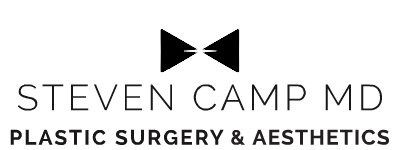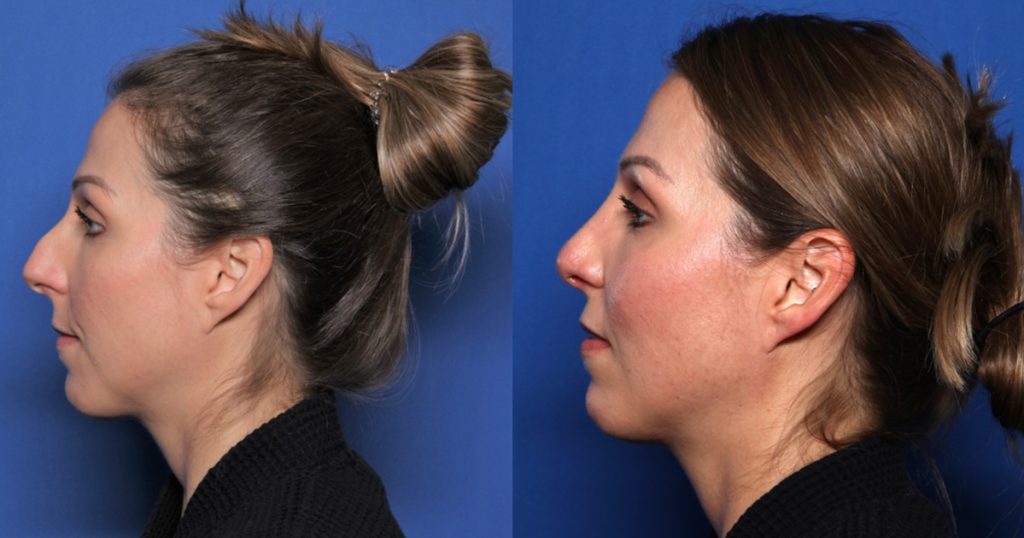One of the most popular procedures I perform at my Fort Worth plastic surgery practice is rhinoplasty. This surgery can transform your face and your confidence, resulting in improved breathing and aesthetic balance.
To help you achieve the best possible results, I’ve prepped some rhinoplasty post-operative tips and recovery timeline details to help you prepare for your rhinoplasty journey.
Rhinoplasty Post-Operative Instructions
After surgery, it is tempting to go right back to your regular daily activities, but I always recommend my patients take some time to rest and recover. Your body will thank you!
Take Care of Yourself
I advise my patients to follow these simple post-care instructions immediately following rhinoplasty surgery:
- Get plenty of rest.
- Follow a balanced diet.
- Decreased activity may promote constipation, so you may want to add more raw fruit to your diet and be sure to increase fluid intake.
- Take pain medication as prescribed. Do not take aspirin or any products containing aspirin.
- Do not drink alcohol when taking pain medications.
- Even when not taking pain medications, no alcohol for 3 weeks as it causes fluid retention.
- If you are taking vitamins with iron, resume these as tolerated.
- Do not smoke, as smoking delays healing and increases the risk of complications.
Get Moving
After surgery, I encourage my patients to resume moderate activities to help improve blood flow and enhance surgical outcomes. Follow these simple steps to help your body as it recovers:
- Start walking as soon as possible, this helps to reduce swelling and lowers the chance of blood clots.
- Do not drive until you are no longer taking any pain medications (narcotics).
- Return to work in 1-2 weeks.
- Avoid strenuous activities or any activity that increases your blood pressure for 2-3 weeks.
- Avoid body contact sports, hitting or rubbing your nose, and sunburn for 2 months.
Caring for Your Rhinoplasty Incision
Caring for your incision will help reduce scarring and improve your outcomes. These are some tips I recommend:
- You may shower after your first post-op appt.
- Avoid exposing scars to sun for at least 12 months.
- Keep steri-strips in place.
- Stay in bed with your head elevated (except for going to the bathroom) for the first day.
- Cold compresses will reduce swelling.
- Do not shampoo your hair until nose splint is removed, or ask for special instructions.
- Avoid blowing your nose for 1 week.
- Be gentle when washing your face and hair or using cosmetics.
- Do not use facial makeup on external incisions until advised by surgeon.
- Contact lenses can be worn as soon as you feel like it, but glasses cannot be worn until your nose is completely healed (approximately 2 months) unless otherwise instructed by your doctor. This may require taping of your glasses to your forehead.
Rhinoplasty Recovery Timeline
What To Expect
During the days and weeks following rhinoplasty, your nose and face will experience many changes. Here are some of the most common things to expect following nose surgery:
- You may be up and about in 2 days, but it will be several weeks before you are entirely up to speed.
- Feeling depressed is normal.
- After surgery, particularly during the first 24 hours, your face will feel puffy.
- A small amount of bleeding is common during the first few days.
- A splint is applied immediately after surgery for 7 days. Nasal packs may also be used.
- Minimal postoperative pain.
- Your nose may ache, and you may have a dull headache.
- Temporary swelling and bruising around eyes and nose will increase at first and peak after 2 or 3 days.
- Most swelling and bruising should disappear within 2 weeks. Some subtle swelling (noticeable only to you) will remain for several months.
- Healing is a slow and gradual process.
- Some numbness may be present around the operative areas.
- Black eyes and swollen nose and eyelids for 7-14 days.
- You may experience some discomfort with breathing.
- Swollen nasal tissues may cause the nose to seem “stuffed up” for several weeks.
Rhinoplasty Follow-Up Care
- If you have nasal packing, it will be removed after a few days.
- External sutures, if present, are removed in approximately 7 days.
Understanding What Is Normal and Not Normal After Rhinoplasty
After surgery, your nose will undergo many changes over the first several weeks. It is normal to experience some swelling, tenderness, and bruising at the surgical site, but I encourage you to call your plastic surgeon if you experience any of the following side effects:
- If you have increased swelling or bruising.
- If swelling and redness persist after a few days.
- If you have increased redness along the incision.
- If you have severe or increased pain not relieved by medication.
- If you have any side effects to medications, such as, rash, nausea, headache, vomiting.
- If you have an oral temperature over 100.4 degrees.
- If you have any yellowish or greenish drainage from the incisions or notice a foul odor.
- If you have bleeding from the incisions that is difficult to control with light pressure.
- If you have a nosebleed or any unusual symptoms.
When Will You See Your Rhinoplasty Results?
Some results from your rhinoplasty may be visible immediately, but you can expect your new nose to look better after 2-3 weeks. It usually continues to improve over many months following surgery.
Your final results may not be apparent for a year or more.
Schedule Your Rhinoplasty Consultation Today
Take the next step. Schedule your rhinoplasty consultation by calling (817) 228-4315 or request a consultation online to meet with me to learn how a rhinoplasty can help you achieve your aesthetic goals today.


Leave a Reply